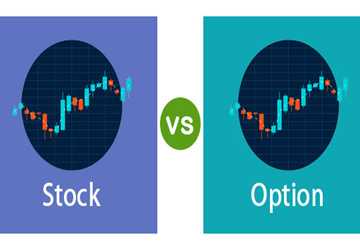Why Purchasing Stocks And Building a Portfolio Are Two Distinct Actions
Author: abhijeetm
In 2021, 61% of adults with a household income ranging from $40,000 to $99,000 owned shares. If you want to start investing, you must do a lot of thinking before making any decisions.
It would help if you decided on how much of your money you want to put into equities or fixed income, if you wish to invest in different types of stocks, and whether you want to diversify geographically. Before making any final decisions, looking at these choices from the perspective of building a portfolio versus purchasing individual stocks will often be helpful.
This blog post will help you to understand the difference between building a portfolio and buying a stock. But before starting, learning about the exact meaning of both actions is recommended.

Buying a stock - Overview
Buying a stock means buying a share of the company. A stock purchase happens when an investor owns a company's stake. Purchasing a stock is to sell the shares for a better price and profit. A buy order instructs a stockbroker to purchase a security. Buying stock has several benefits, and the following are the top benefits of buying stocks:
● Give a feel of ownership- buying a company share will give a feel of the company owner. Investors will become shareholders and play an essential role in a company's decisions if they have ownership. They also receive annual learn reports, which provide specific insights and allow them to know more about the organization.
● Dividend benefits- Investors will receive dividends after buying a company's share. A bonus is a profit share or payment a firm makes to its shareholders. Dividend payments will be made regardless of whether the stock has lost value or represents a profit from the claims.
● Investment gain One of the primary advantages of investing in the stock market is the opportunity to make more money. Investors who have placed their money in reliable enterprises will see profit growth. Similarly, investing in several equities will help investors generate wealth by leveraging growth in multiple areas, resulting in a profit.
We hope you understand the exact meaning of buying a share or stock. Now it's high time to learn the overview of building a portfolio.
Building a portfolio - overview
A portfolio is a set of financial assets and investing tools held by an individual, a financial institution, or an investment firm. In simple terms, it is a collection of various assets owned by investors.
Financial assets may include valuables like gold, property, stock, bond, shares, and more. Understanding a portfolio's fundamentals or rules and the factors that affect it is crucial for building a profitable portfolio. Below are the top benefits of building a portfolio:
● Portfolios perform better than mutual funds because they put all valuables equal.
● If you have to generate cash, the portfolio of companies will give you options to sell shares. You can sell stock in companies in which you have made a profit.
● Investors will receive weighted average returns on their underlying securities and will not be exposed to the volatility of a specific asset.
We hope you now understand the meaning and benefits of portfolio building. If you want an in-depth clarification about the difference between building a portfolio and buying a share, the next section is the best solution.

Building a portfolio vs. buying a share
Investing in the share or stock market can be an excellent method to build money over time. Nonetheless, there needs to be more understanding of the distinction between buying stocks and developing a portfolio. While these two behaviors may appear to be identical, they are not. Below are the key factors that will help you to understand the difference between buying a stock and building a portfolio:
Discrete choice
The discrete choice is the first factor differentiating buying a stock and building a portfolio. Discrete choice models explain or forecast a choice from two or more discrete (i.e., separate and separable; mutually exclusive) options. The discrete choice is used to buy stock. With an Rs.0.5 million budget, you can invest in either Reliance or Larsen & Toubro based on your estimate of their potential.
On the other hand, the portfolio is not built based on discrete choice. When establishing a portfolio, the goal is to accommodate all alternative options as best as possible. Portfolios do not believe in discrete decisions and are more about combinations.
Goal
The goal is another crucial factor that distinguishes buying a stock and building a portfolio. The goal is the essential factor that can help you build a perfect portfolio because you start with a plan when you make a portfolio.
On the other hand, goals do not play a crucial role in purchasing a share, and you are buying a stock because you perceive fundamental value in the company's operations. Also, the P/E ratio is very appealing, and you can see a valid dividend strategy.
Risk tolerance
The next difference between purchasing a stock or building a portfolio is the risk tolerance or management of risks. When deciding whether to buy real estate or a banking stock, you are not primarily considering your risk tolerance. In this situation, the emphasis is on the relative qualities of the stores.
In contrast, when you consider starting to build a portfolio. You might wonder whether the portfolio type can handle stock risks. Moreover, whether the stock you add to the portfolio will increase or decrease the risk factor. This is not the end; you might need clarification about risk tolerance while creating a portfolio.
Conclusion
Buying stocks and creating a portfolio are distinct benefits and dangers. While buying individual stocks can bring excellent profits, it carries considerable risks and can result in a lack of diversification in your portfolio. On the other hand, creating a portfolio provides the advantages of diversification and long-term development potential but may necessitate a more significant initial commitment and a longer time horizon.







